Ahmad Y. Javaid
Effects of Voice-Based Synthetic Assistant on Performance of Emergency Care Provider in Training
Aug 12, 2020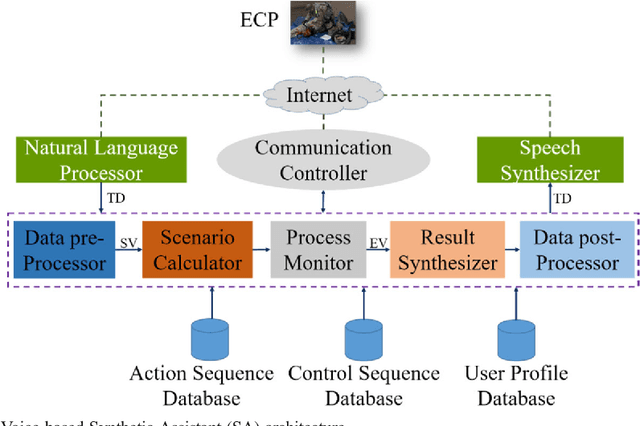


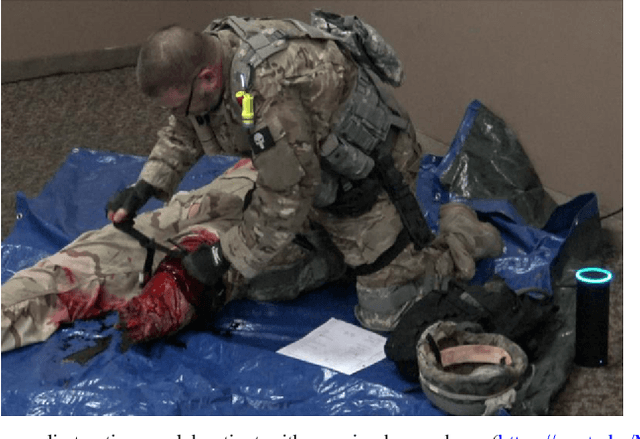
Abstract:As part of a perennial project, our team is actively engaged in developing new synthetic assistant (SA) technologies to assist in training combat medics and medical first responders. It is critical that medical first responders are well trained to deal with emergencies more effectively. This would require real-time monitoring and feedback for each trainee. Therefore, we introduced a voice-based SA to augment the training process of medical first responders and enhance their performance in the field. The potential benefits of SAs include a reduction in training costs and enhanced monitoring mechanisms. Despite the increased usage of voice-based personal assistants (PAs) in day-to-day life, the associated effects are commonly neglected for a study of human factors. Therefore, this paper focuses on performance analysis of the developed voice-based SA in emergency care provider training for a selected emergency treatment scenario. The research discussed in this paper follows design science in developing proposed technology; at length, we discussed architecture and development and presented working results of voice-based SA. The empirical testing was conducted on two groups as user studies using statistical analysis tools, one trained with conventional methods and the other with the help of SA. The statistical results demonstrated the amplification in training efficacy and performance of medical responders powered by SA. Furthermore, the paper also discusses the accuracy and time of task execution (t) and concludes with the guidelines for resolving the identified problems.
Common Metrics to Benchmark Human-Machine Teams (HMT): A Review
Aug 11, 2020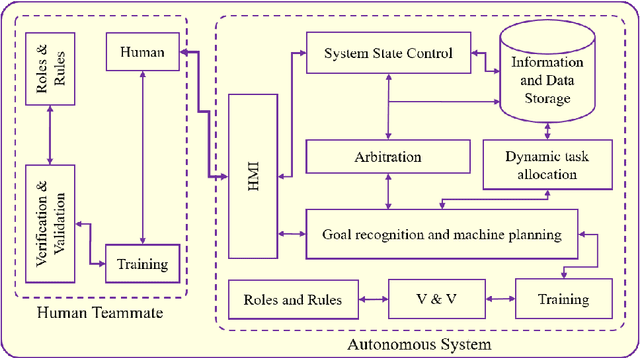
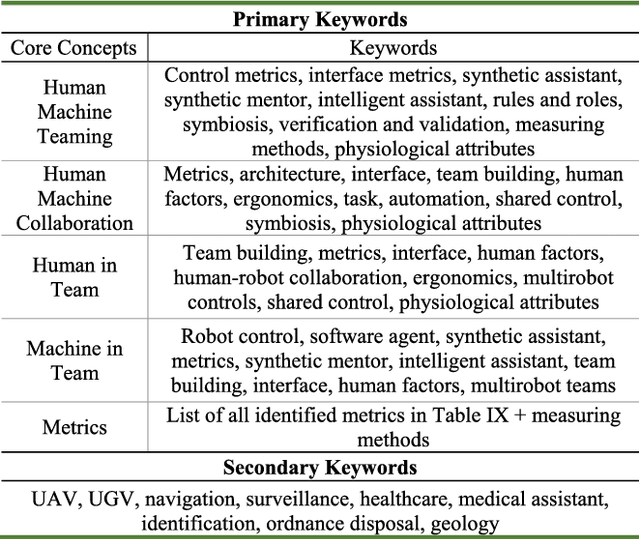
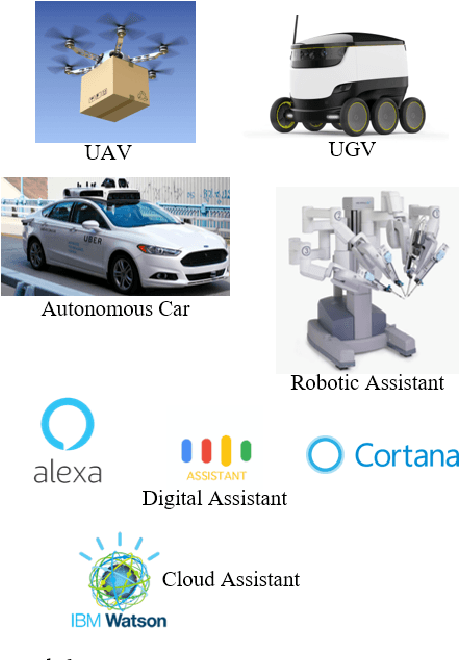
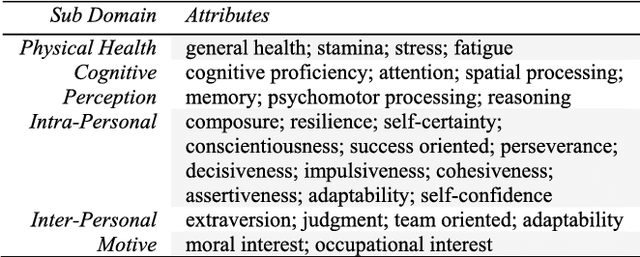
Abstract:A significant amount of work is invested in human-machine teaming (HMT) across multiple fields. Accurately and effectively measuring system performance of an HMT is crucial for moving the design of these systems forward. Metrics are the enabling tools to devise a benchmark in any system and serve as an evaluation platform for assessing the performance, along with the verification and validation, of a system. Currently, there is no agreed-upon set of benchmark metrics for developing HMT systems. Therefore, identification and classification of common metrics are imperative to create a benchmark in the HMT field. The key focus of this review is to conduct a detailed survey aimed at identification of metrics employed in different segments of HMT and to determine the common metrics that can be used in the future to benchmark HMTs. We have organized this review as follows: identification of metrics used in HMTs until now, and classification based on functionality and measuring techniques. Additionally, we have also attempted to analyze all the identified metrics in detail while classifying them as theoretical, applied, real-time, non-real-time, measurable, and observable metrics. We conclude this review with a detailed analysis of the identified common metrics along with their usage to benchmark HMTs.
Application Specific Drone Simulators: Recent Advances and Challenges
Feb 02, 2019
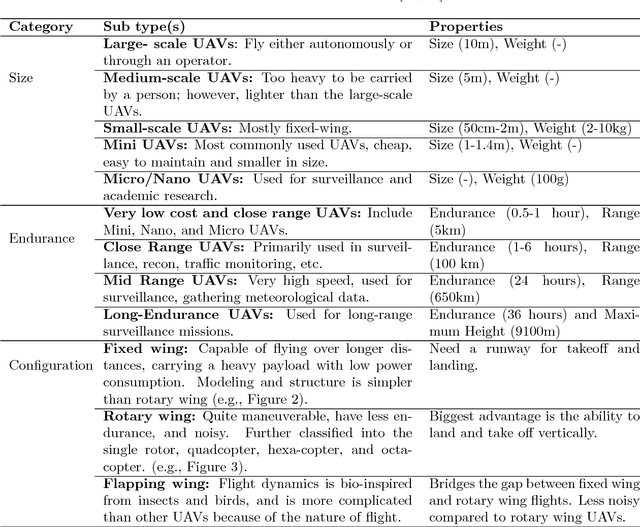
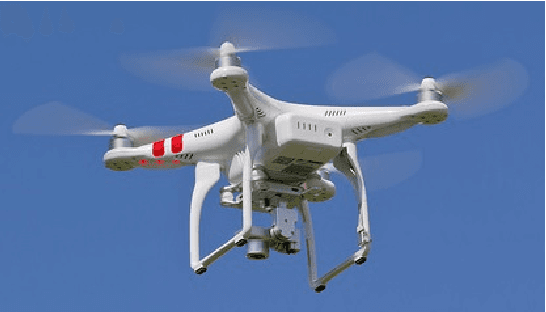
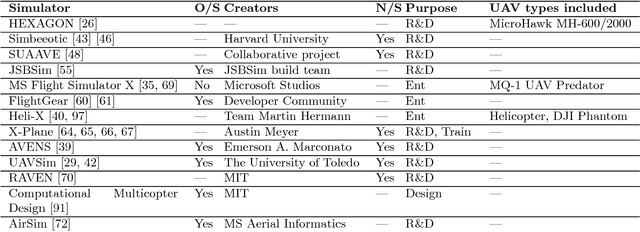
Abstract:Over the past two decades, Unmanned Aerial Vehicles (UAVs), more commonly known as drones, have gained a lot of attention, and are rapidly becoming ubiquitous because of their diverse applications such as surveillance, disaster management, pollution monitoring, film-making, and military reconnaissance. However, incidents such as fatal system failures, malicious attacks, and disastrous misuses have raised concerns in the recent past. Security and viability concerns in drone-based applications are growing at an alarming rate. Besides, UAV networks (UAVNets) are distinctive from other ad-hoc networks. Therefore, it is necessary to address these issues to ensure proper functioning of these UAVs while keeping their uniqueness in mind. Furthermore, adequate security and functionality require the consideration of many parameters that may include an accurate cognizance of the working mechanism of vehicles, geographical and weather conditions, and UAVNet communication. This is achievable by creating a simulator that includes these aspects. A performance evaluation through relevant drone simulator becomes indispensable procedure to test features, configurations, and designs to demonstrate superiority to comparative schemes and suitability. Thus, it becomes of paramount importance to establish the credibility of simulation results by investigating the merits and limitations of each simulator prior to selection. Based on this motivation, we present a comprehensive survey of current drone simulators. In addition, open research issues and research challenges are discussed and presented.
 Add to Chrome
Add to Chrome Add to Firefox
Add to Firefox Add to Edge
Add to Edge